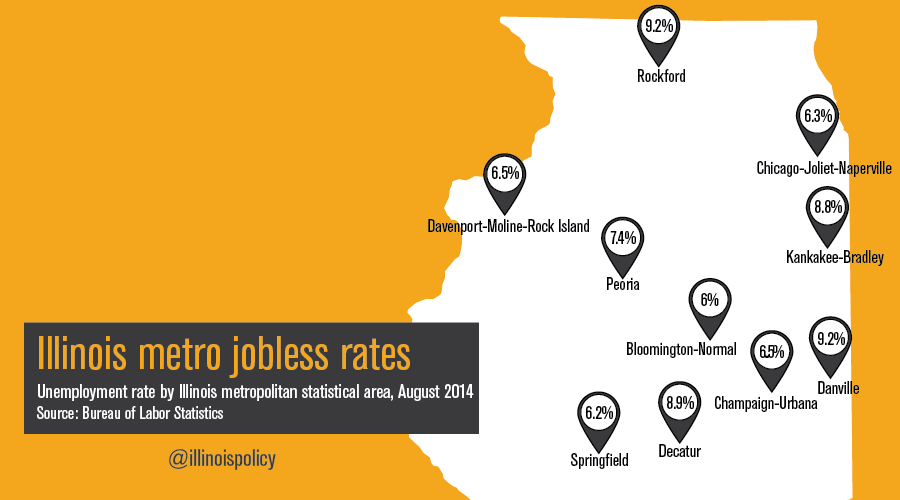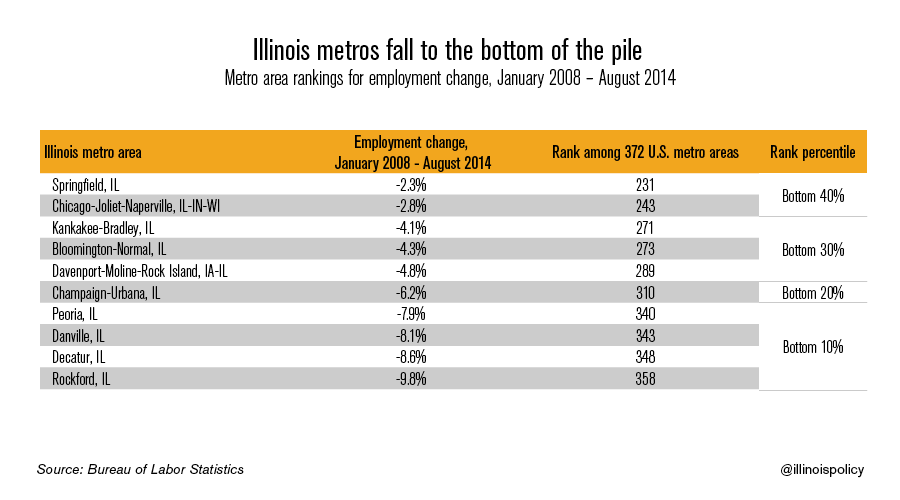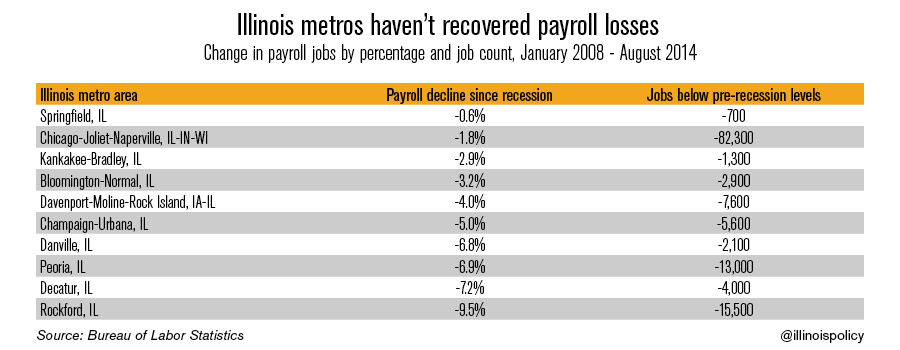Workforce shrinks in 9 of 10 metro areas
Though unemployment rates fell in August for Illinois’ major metropolitan areas, 19,000 workers dropped out of the workforce, according to the Bureau of Labor Statistics. Because of these dropouts, the workforce shrank in every metropolitan statistical area, or MSA, except Champaign-Urbana. Workforce dropouts drive down the unemployment rate because unemployed workers who leave the workforce...
Though unemployment rates fell in August for Illinois’ major metropolitan areas, 19,000 workers dropped out of the workforce, according to the Bureau of Labor Statistics. Because of these dropouts, the workforce shrank in every metropolitan statistical area, or MSA, except Champaign-Urbana.
Workforce dropouts drive down the unemployment rate because unemployed workers who leave the workforce are no longer counted as unemployed.
The state jobless rate has fallen from 8.4 percent to 6.7 percent over the past five months, and Illinois’ metro jobless rates have come down with it. The dominant factor for the drop in the state’s unemployment rate over the last five months has been workers dropping out of the labor force.
In fact, the entire decline in the state’s jobless rate in both July and August was due to labor-force dropouts. And in June, the Illinois labor force shrank by the largest amount in state history. As a result of labor-force dropouts, the unemployment rate has become a less accurate indicator of Illinois’ poor economic health.
When it comes to putting people back to work, Illinois metros continue to stack up poorly compared to the rest of the country’s metropolitan areas. The best-ranking Illinois metro area is Springfield, which comes in at 231st out of 372 metro areas nationwide. Peoria, Danville, Decatur and Rockford all rank in the bottom 10 percent nationally.
The BLS’s establishment survey of businesses shows that six Illinois metro areas are positive for jobs on the year, while four are negative. Peoria has had the toughest 2014, down 2,600 jobs on the year.
Illinois metro areas have a long way to go to recover the payroll jobs that were lost during the recession, according to the BLS’s business survey. Rockford, which is the third-largest city in the state, is the furthest from recovery.
Illinois metro areas can work to foster entrepreneurship and business development by slashing wait times, reducing occupational licensing requirements, simplifying the permit process to make it easier to start a business and developing more flexible zoning ordinances that can accommodate new businesses.




